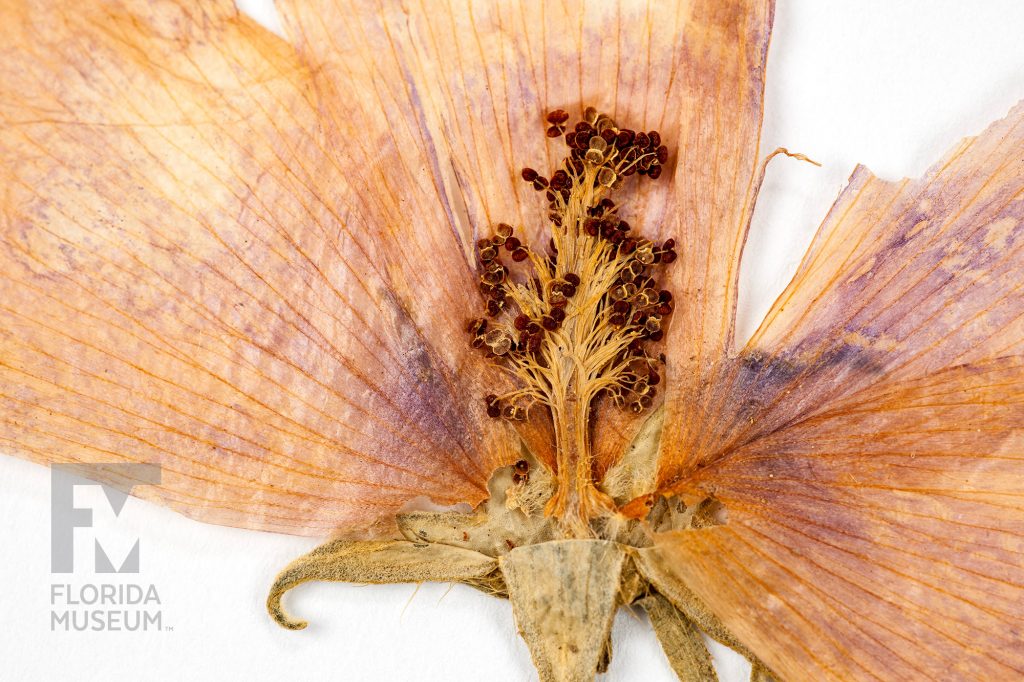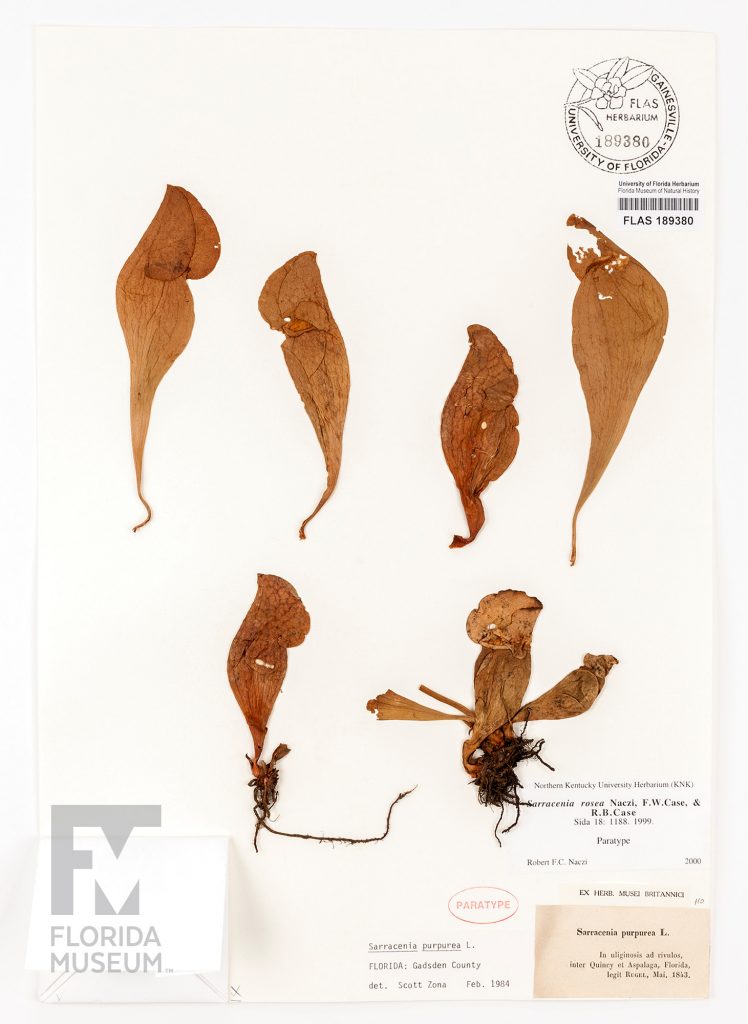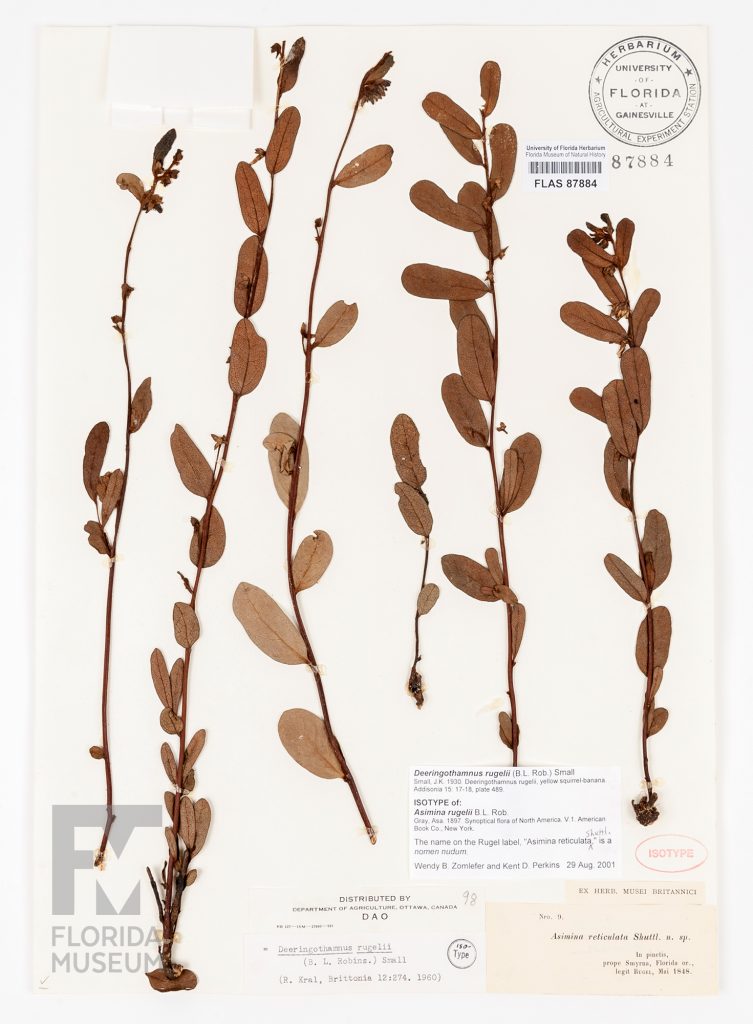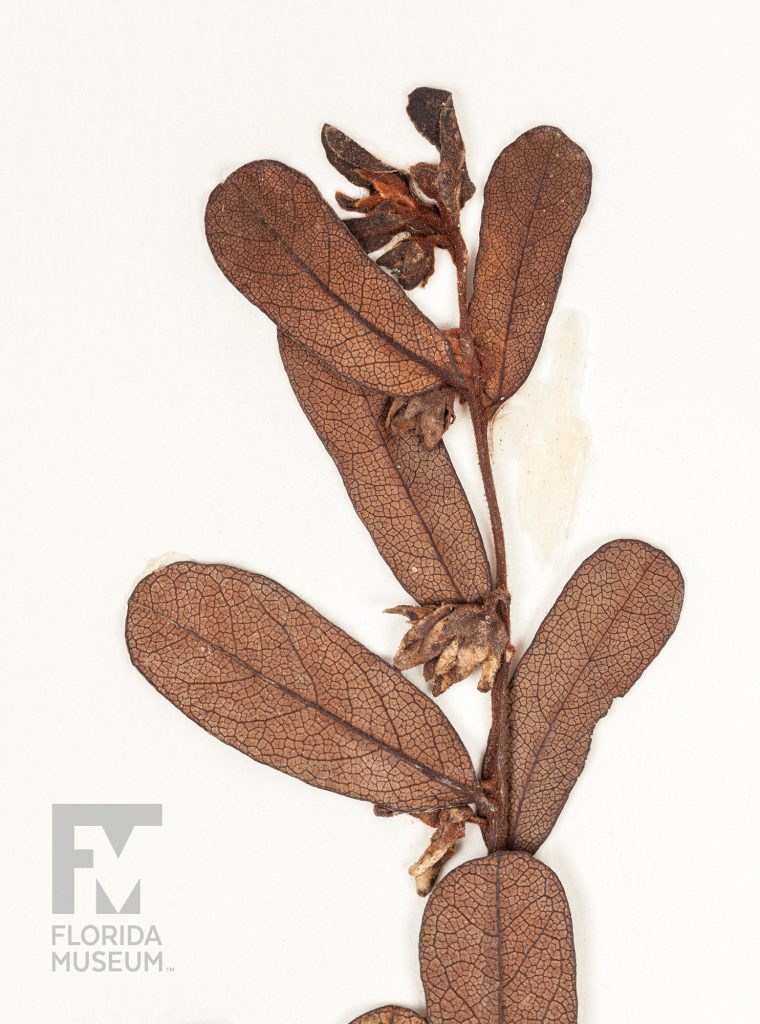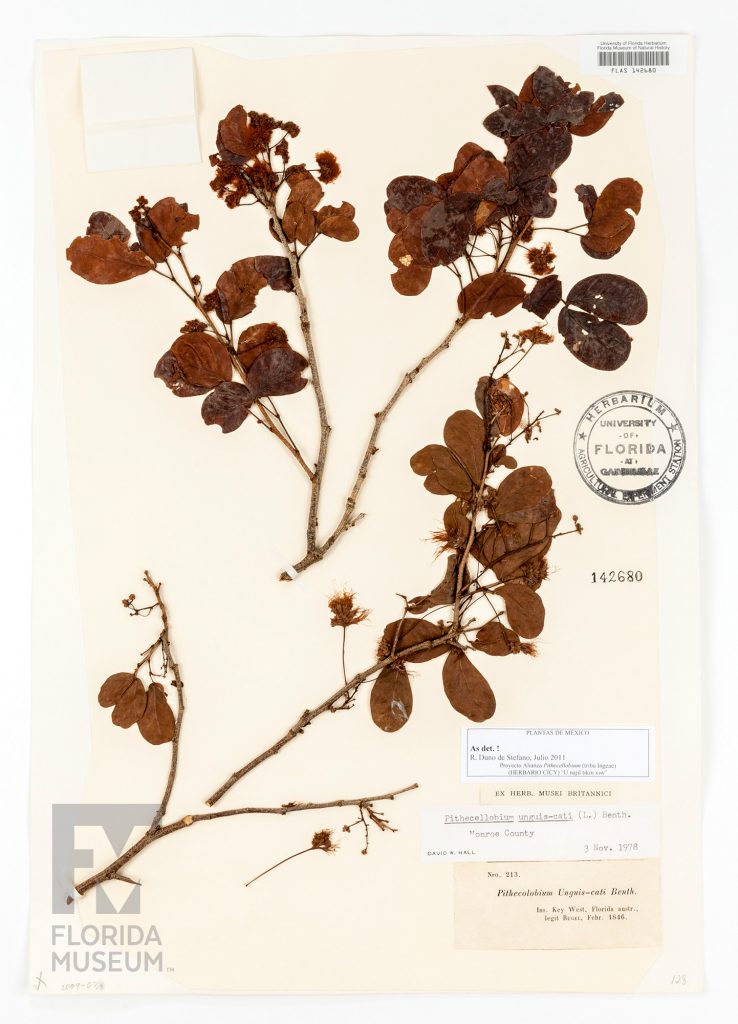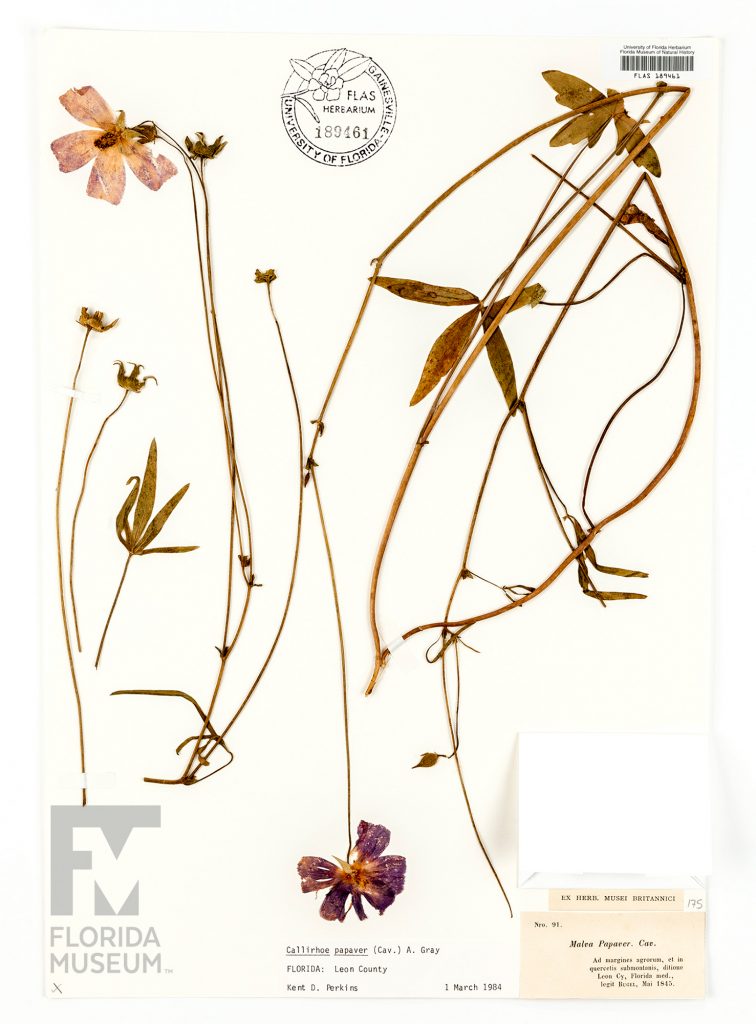The oldest specimens in the Herbarium, gifted by the British Museum in 1970 in exchange for plant identification, document Florida flora in the 1840s. German-born Rugel was a professional collector, providing specimens from the Appalachian mountains, Florida and Cuba.
Summary
Rugel’s Pawpaw (Deeringothamnus rugelii)
Woodland Poppymallow (Callirhoe papaver)
Cat’s-claw (Pithecellobium unguis-cati)
Purple Pitcher Plant (Sarracenia purpurea)
Specimens from the Ferdinand Rugel collection
Collection
Story
The Herbarium has hundreds of specimens collected by Ferdinand Rugel and they are among the oldest specimens in the Herbarium. So, how did we get them and why do we have them?
To back up a bit, when I was a grad student in Tennessee and hiking in the Smokies, one of the first wildflowers I learned was Rugel’s ragwort. There is another plant there, Plantago rugelii, and now down here in Florida there is Deeringothamnus rugelii and it never occurred to me to wonder who Rugel was, really.
Turns out that he was a professional botanist and plant collector from the 1800s. He was from Germany but then he moved to the southern Appalachians and eventually collected in Florida and Cuba. He made his living by actually collecting plants and selling them to museums and private collectors. Everybody thinks of that is a government job now, or a museum job, but people actually made a living back then doing that.
We were given the specimens from the British Museum as a gift in exchange for putting names on some of their duplicate collections of them, so we kinda trade them like stamps or magazines.
It’s kinda interesting that Rugel collected this rare Deeringothamnus rugelii – Rugel’s pawpaw – back in the 1800s. It’s one of the rarest plants in Florida and those specimens traveled probably all over Europe and then back to the U.S. and back to the U.S. National Herbarium and then eventually made its way back here to Florida, to the University of Florida. That’s what museums do best – preserve rare specimens like this.
Mark Whitten
Senior Biologist, University of Florida Herbarium*
Florida Museum of Natural History
Exhibit
On display Sept. 23, 2017-Jan. 7, 2018, Rare, Beautiful & Fascinating: 100 Years @FloridaMuseum celebrated the Museum’s rich history. Each Museum collection was asked to contribute its most interesting items and share the stories that make them special. Though the physical exhibit is closed, this companion website remains online, providing an opportunity to experience the Florida Museum’s most treasured specimens.
Exhibit Area: 100 Years of History
Theme: Historical Collections
 Want to see more? Explore more than 300 breathtaking color photos of plants, animals, fossils and cultural heritage materials from the Florida Museum of Natural History’s collections in the award-winning book All Things Beautiful available from the University Press of Florida.
Want to see more? Explore more than 300 breathtaking color photos of plants, animals, fossils and cultural heritage materials from the Florida Museum of Natural History’s collections in the award-winning book All Things Beautiful available from the University Press of Florida.
*This title was accurate at the time the exhibit was on display in 2017. Please visit the collection website to verify current staff and student information.
